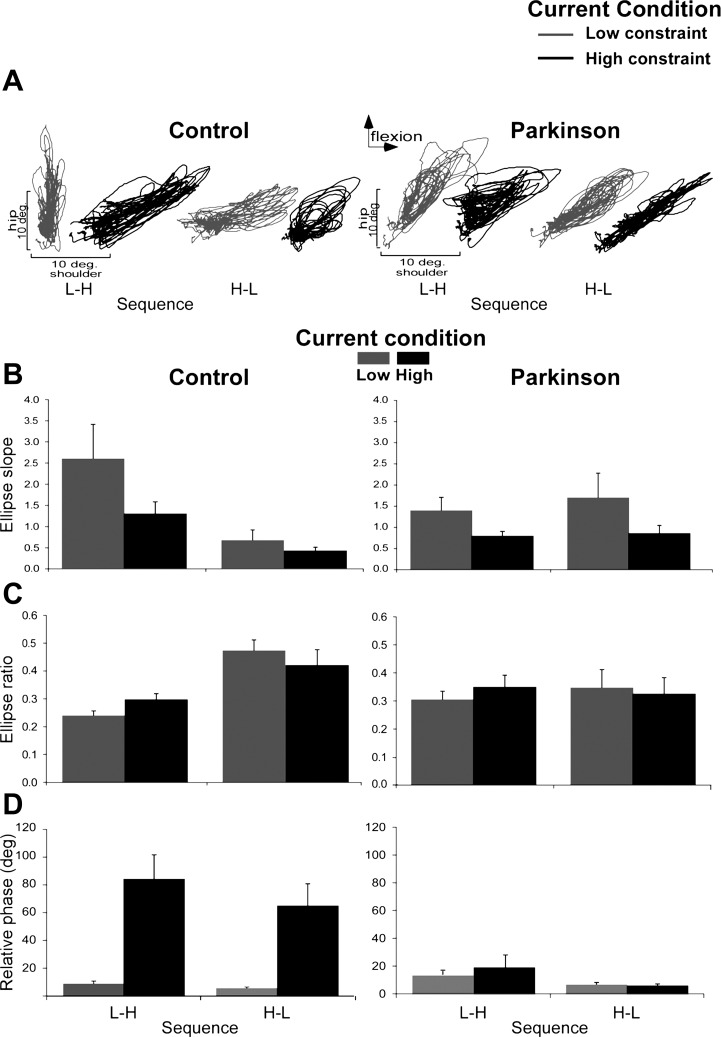Fig. 4.

Interjoint coordination for PD and control participants as a function of current constraint and sequence of constraints. A: representative examples of shoulder and hip coordination of 21 trials for control subject 4 (L-H sequence) and subject 5 (H-L sequence) as well as for PD subject 6 (L-H sequence) and subject 4 (H-L sequence). B: means and SEs of the ellipse slope. C: means and SEs of the ratio of ellipse. D: relative phases between the shoulder and hip (high values are interpreted as more out-of-phase coordination).
